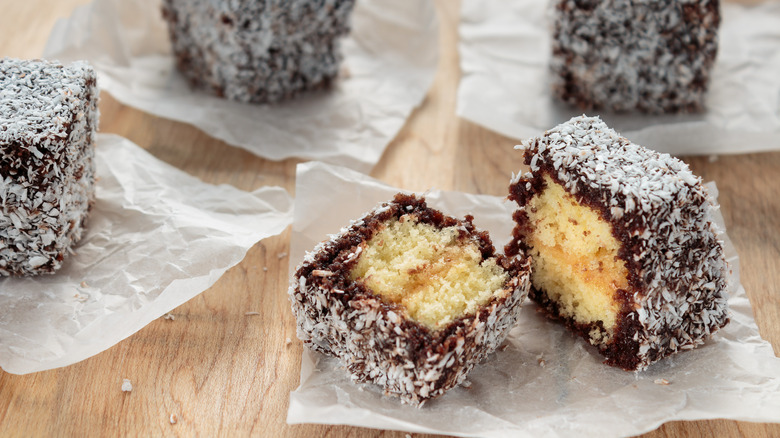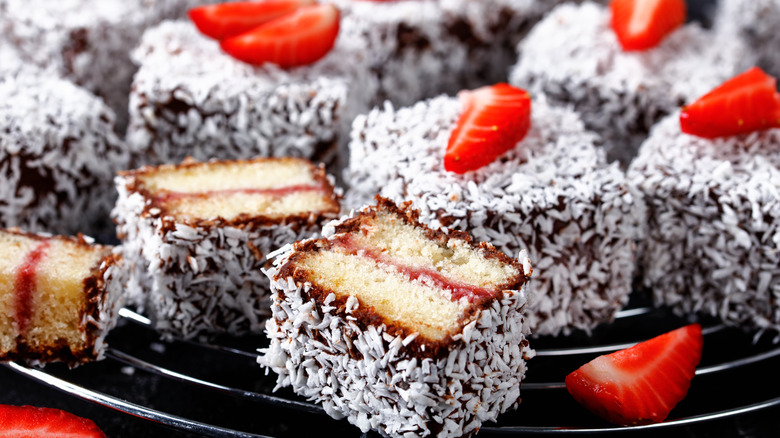Lamingtons: Australians Eat Cake In Cubes And You Can Too
It hasn't been that long since the short-lived reign of the cake pop quietly came to an end. Some of us may still indulge in one now and then, never having lost our craving for the spherical, sprinkle-covered baked good, which CNBC called "the next big trend" when it first hit the sweets scene in 2011.
At the time, it seemed novel. Why reserve cake or cupcakes for special occasions when you could snack on a bite-sized version in the middle of the afternoon? Ordering a (normal-sized) slice of cake from a bakery can atomically add an air of celebration to an otherwise average day, making cake pops an understated alternative.
But Australians were way ahead of the game when it comes to miniature cakes, although theirs favors a cube shape. They're called Lamingtons: blocks of sponge cake, often with a layer of jam in the middle, dipped in chocolate and coated in shredded coconut. Here's how they became a national dessert in the land down under.
They're originally from New Zealand
For years, legend had it that Lamingtons came to be at the turn of the 20th century, named after the governor of Queensland at the time, Lord Lamington. Like the tales behind so many of our favorite desserts, the story went that Lord Lamington's servants accidentally dropped his employer's favorite sponge cake into a pot of melted chocolate. The horror! When the Lord saw what had happened, he allegedly suggested rolling the chocolatey cubes in coconut to make them neater to eat.
But despite the prominence of Lamingtons in the Australian dessert canon, University of Auckland research shows that the tidy confection was actually invented in New Zealand. Proof, shared with The Guardian in 2014, can be found in "Summer Pantry," an 1888 watercolor painting by New Zealand artist JR Smythe. If you look closely, you can see a half-eaten Lamington languishing on the tabletop of a cottage, whose kitchen overlooks Wellington Harbour. As such, the treats were originally called Wellingtons.
So, how did they become associated with Australia?
Australia celebrates National Lamington Day
In addition to the sight of a Lamington in a New Zealand painting that preceded the first Australian claim to the dessert, University of Auckland researchers also found an 1895 report in the New Zealand Herald that detailed Lord Lamington's visit to New Zealand, a year before the start of his tenure as the Governor of Queensland.
The article, cited by The Guardian, states that the Lord was "much taken with the local sweets provided him by local bakers A.R. Levin." While the first known recipe for the dessert appeared in the Queensland Country Life newspaper in 1902, it appears that Lord Lamington may have taken credit for something that wasn't his.
Despite this newfound knowledge of the Lamington's origin story, Australians still consider it a national dessert. The country even celebrates National Lamington Day on July 21. If you don't plan on visiting the Southern Hemisphere any time soon but want to try them for yourself, you might want to try making Lamingtons at home.


